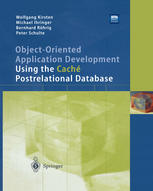

Most ebook files are in PDF format, so you can easily read them using various software such as Foxit Reader or directly on the Google Chrome browser.
Some ebook files are released by publishers in other formats such as .awz, .mobi, .epub, .fb2, etc. You may need to install specific software to read these formats on mobile/PC, such as Calibre.
Please read the tutorial at this link: https://ebookbell.com/faq
We offer FREE conversion to the popular formats you request; however, this may take some time. Therefore, right after payment, please email us, and we will try to provide the service as quickly as possible.
For some exceptional file formats or broken links (if any), please refrain from opening any disputes. Instead, email us first, and we will try to assist within a maximum of 6 hours.
EbookBell Team

4.7
66 reviewsNowadays, newly developed software packages are often obsolete already at the time of their introduction. Object-oriented software development is a possible—if not the only—solution to this dilemma: applications are modeled as software objects that describe the properties and the behavior of real-world entities. Such objects are encapsulated, in that they hide—behind a publicly known interface—the complexity of their internal data structures and behaviors. This enables objects to be used in a wide range of program packages without needing to know the details of their internal implementation.
Linking object-oriented modeled applications with a database places special demands on a database management system and development environment when the usual performance and semantics losses are to be avoided. This book provides a detailed description of the object model of the Caché postrelational database. In addition, it guides the reader step-by-step through the development of postrelational applications. The accompanying CD-ROM contains the complete associated software:
InterSystems Caché™ 4.0 Single-UserThe use of this licensed software is governed by an end user license agreement contained in the software.
System requirements
PC with Intel CPU (Pentium or better), CD-ROM drive, Windows 95/98/Me or Windows NT/2000, 64 MB main memory (128 MB recommended), 100 MB free disk space.